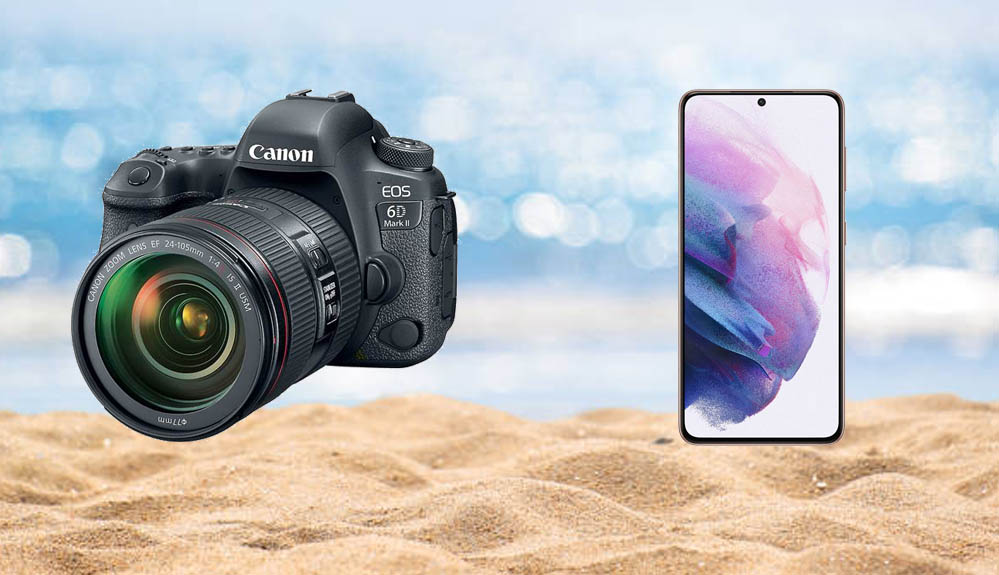Sony - smartphones to match DSLR quality by 2024 (advantages/disadvantages discussion)

Sony’s Semiconductor Solutions CEO, Terushi Shimizu, says smartphone cameras could start taking better pictures than DSLR (digital single-lens reflex) cameras by 2024. Despite these futuristic claims, DSLRs still offer huge advantages over smartphones. We’ll discuss some of the smartphone vs. DSLR advantages in this article.
Sony thinks newer AI processing and imaging chip technologies (two-layer transistors) will allow smartphones to match (and exceed) DSLR image quality. Some of the advances will specifically be seen in video quality, including reduction of low-light noise, higher read-out speeds (up to 8K video), and AI video processing.
DSLR Advantages
There are clear advantages to using a discrete DSLR camera instead of a smartphone. Some of these advantages are obvious, including large choice of detachable custom lens packages, a digital body dedicated to imaging and video, specific imaging software build-into the body, better handling of heat generated from recording video, and removable batteries.
Smartphones Overheat Too Fast
If you’ve ever recorded video on a smartphone during a hot day, you may have noticed the phone will show warning messages and begin to stop working, if it gets too hot. This is a protective safety feature, but still a major disadvantage of using a smartphone over a proper DSLR. Many users run into the smartphone overheating issue by simply taking a lot of pictures – video is even worse.
You Can’t Use Removable Batteries on a Smartphone
Another key advantage of DSLR users is the fact they can use multiple removable batteries, enabling prolonged use. Most smartphones have a permanent built-in battery, which means once you’re taken a few hundred pictures or minutes of video, the phone is basically dead.
Attaching Accessories
Smartphones typically have a single USB port. That’s not sturdy enough to attach anything, for professional video use. A DSLR has a solid body, enabling users to attach cages, lights, microphones, all kinds of camera accessories. Most professional video users will use cages, grips, multiple camera accessories to help get the best pictures and videos, another reason why DSLRs are favored over smartphones.
Larger Storage Solutions
DSLRs enable users to use multiple data storage cards. These days, many smartphones are doing away with the external SD card slots. This means your storage is limited to whatever storage amount is inside the smartphone. Professional DSLR users will typically use several SD memory cards, enabling them to capture tons of photo and video content.
Smartphone Advantages
Having given some examples of DSLR advantages above, let’s talk about why you might want to use a smartphone instead of a DSLR. Obviously, a thin smartphone is easy to carry with you at all times and fits into your pocket. Many smartphones offer pretty decent photo and video capabilities, especially the top smartphone models.
You Always Have It
Sometimes the perfect video or picture comes when you least expect it. Because a smartphone is small and lightweight, and you typically have it in your pocket at all times, it’s probably one of the biggest advantages over DSLRs (bulky bodies).
Easy Selfies
Smartphones make it easy to take pictures and selfies. Built-in software can make this a huge advantage, especially single user photography modes (wave hands, smile, say cheese, etc.). Add a Bluetooth remote to a smartphone and you have a mini version of a DSLR-like photography package.
Larger Monitor
When you use a smartphone in selfie mode, you’re probably looking at a monitor (your phone screen) that’s much larger than the typical DSLR screen. Note: This advantage disappears when you use a DSLR with an external monitor source (common among professionals).
Conclusion
As you can see, there are significant advantages to using a DSLR (for both photo and video). These advantages also mean that the DSLR may offer better photo and video capabilities, compared to smartphones. The claims from Sony of smartphones outperforming DSLRs by 2024 is something we will have to wait and see about. It would be nice to have a professional quality system that fits into your pocket, but that’s something we’ll believe when we see it. Over the past 10 years, there have been many claims about smartphones and DSLRs. The market will continue to shift and we will see newer technologies, but DSLRs are still here to stay, especially for the professional photo and video community.
More about author.
